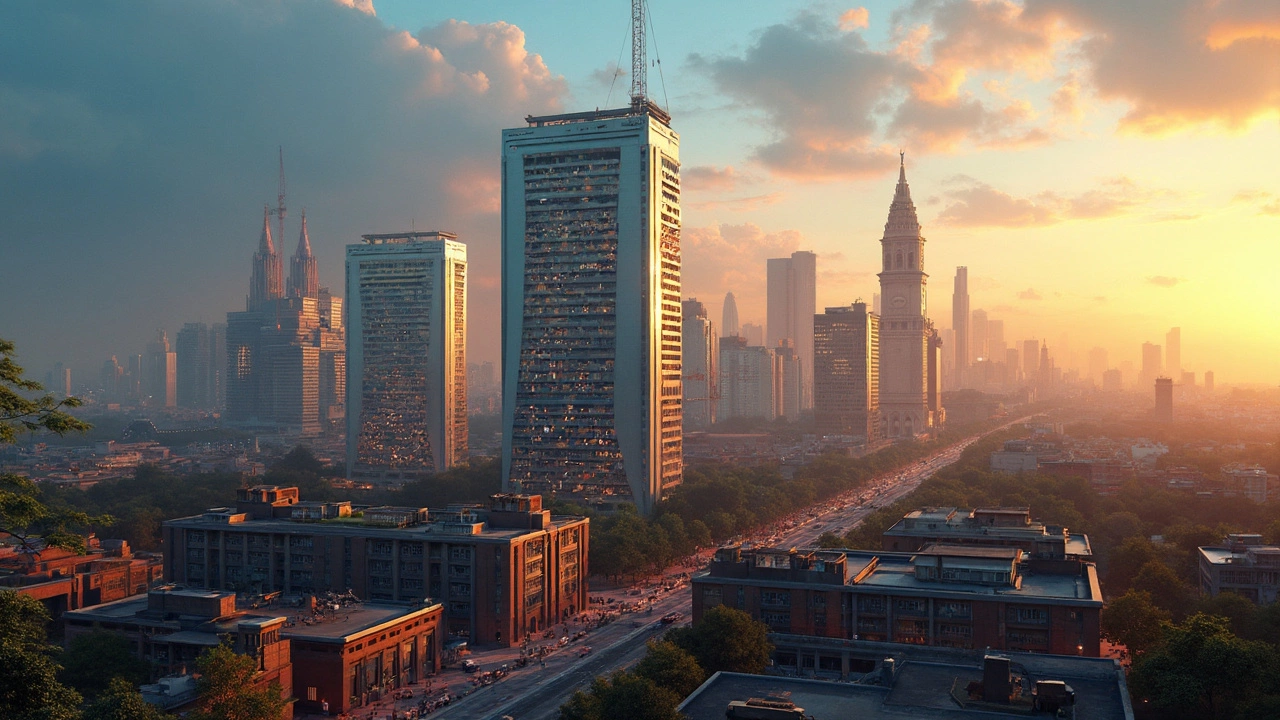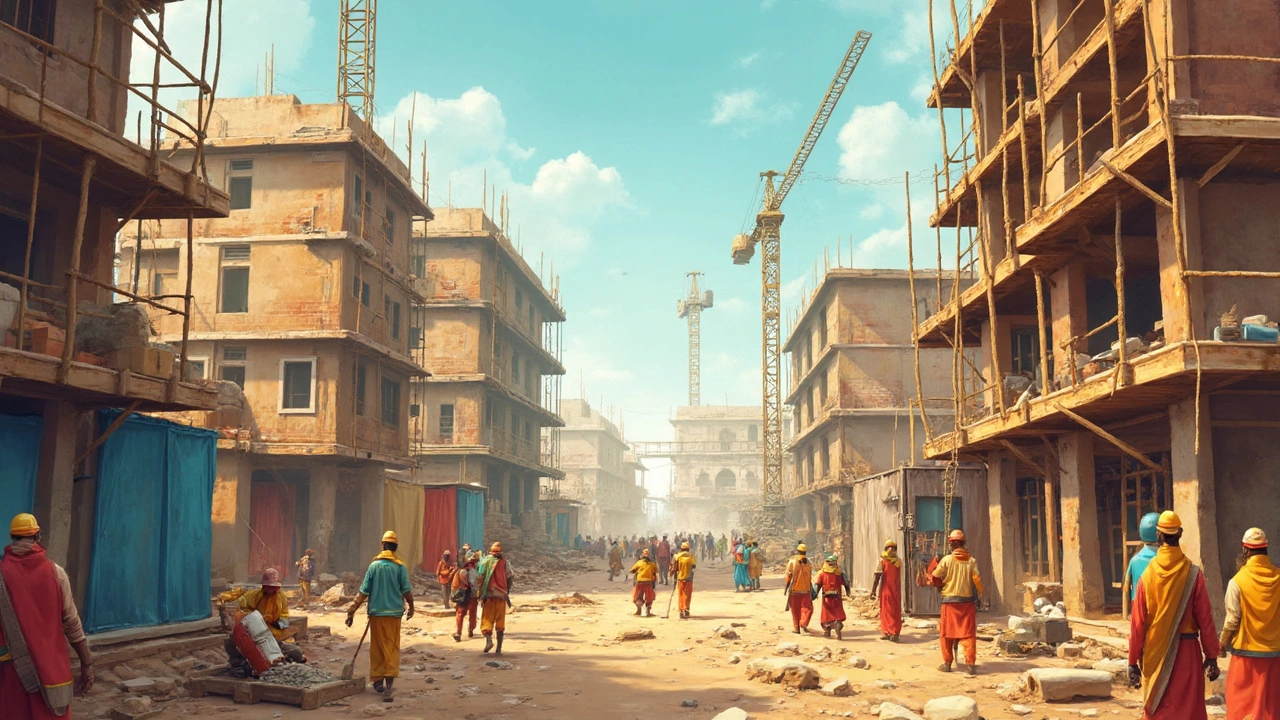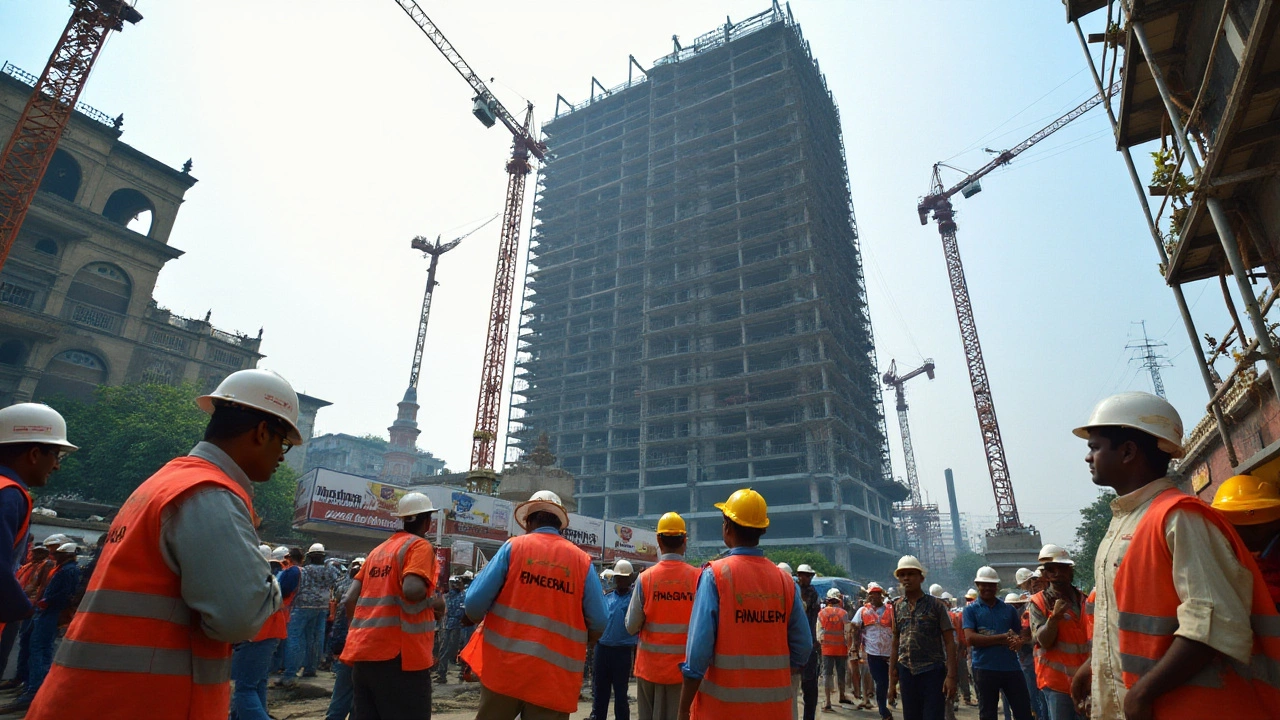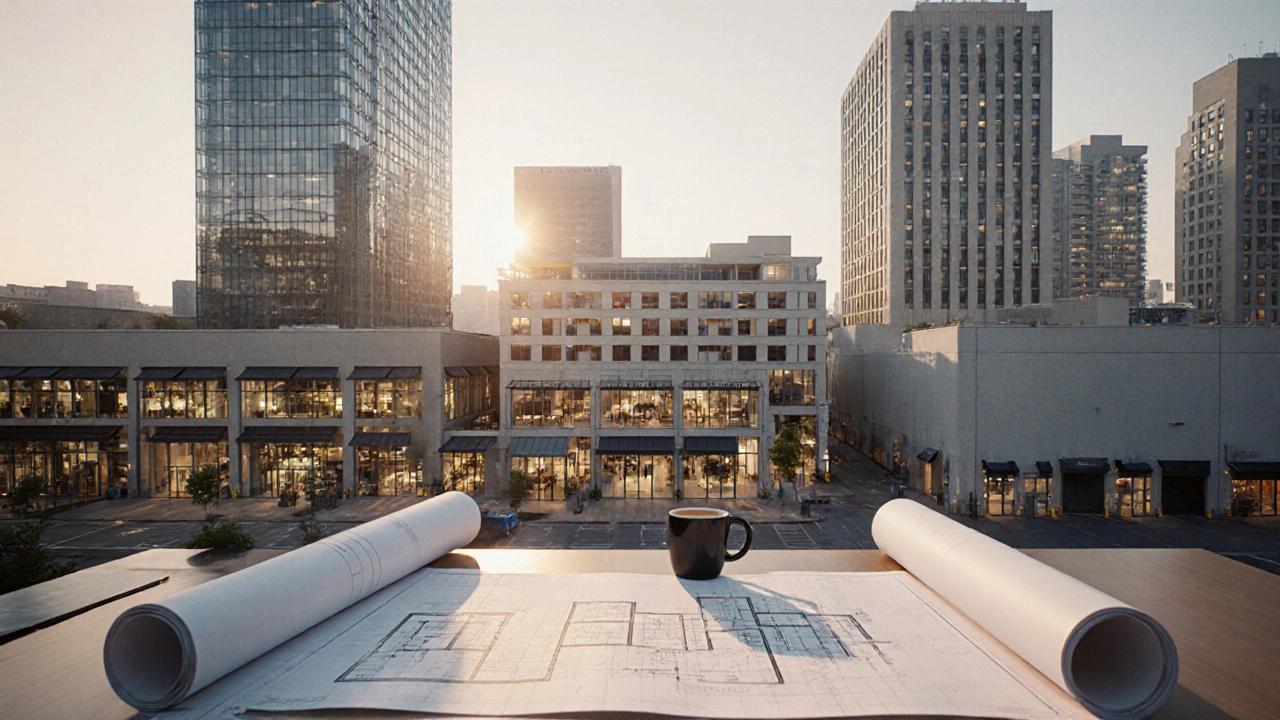Is Commercial the Same as Non-Residential? Understanding the Differences

So you're diving into the world of construction and bumped into terms that seem interchangeable—commercial and non-residential. But are they really the same thing? Not quite. While these terms often get mixed up, they actually refer to different aspects within the construction realm.
Commercial construction is all about spaces intended for business activities. Think shopping malls, restaurants, and office buildings. They're designed with not just utility but also customer experience and foot traffic in mind. Meanwhile, non-residential construction is a bigger umbrella, including any structure not meant for living—so hospitals, schools, and even sports stadiums fall under this category.
Knowing the difference between these terms isn't just semantics. It's crucial for planning a development project, understanding zoning laws, and meeting building regulations effectively. In this article, we'll chat about why these distinctions matter and offer some tips to help steer your construction projects in the right direction.
- Understanding Commercial Construction
- Defining Non-Residential Buildings
- Key Differences and Overlaps
- Types of Commercial Projects
- Regulations and Considerations
- Tips for Navigating Construction Projects
Understanding Commercial Construction
When we talk about commercial construction, we're diving into projects designed mainly for business operations. This means these buildings aren't for people to live in but for them to conduct business activities, shop, or dine. It's a vibrant sector full of complexity and excitement, largely driven by economics and consumer behavior.
Commercial spaces range from small standalone stores to massive complexes like malls or business parks. A cool fact: Retail and office buildings make up a substantial part of the commercial sector. The design for these places often leans toward aesthetic appeal as much as function, aiming to attract customers or businesses.
The Core Elements
Key components of commercial construction include retail spaces, office buildings, warehouses, and sometimes even hotels. Each project has unique needs. For instance, a restaurant demands specific kitchen layouts and ventilation systems, while an office building focuses on maximizing space and providing amenities like conference rooms.
Understanding the Impact
The economic impact of the commercial construction sector is significant. It not only creates jobs during the construction phase but also boosts local economies once the buildings are operational. It's not just about the structure itself but also about the businesses it will house and the customers it will attract.
Materials and Methods
The choice of materials is another interesting aspect. In commercial construction, durability and safety are top priorities. This means using strong materials that meet stringent safety codes and provide longevity. Here’s a quick glance at the materials often prioritized:
- Steel and concrete for structural integrity.
- Glass and aluminum for sleek, modern facades.
- Specialized finishes for interior design to enhance customer experience.
Now, many projects are veering towards sustainable solutions, choosing eco-friendly materials and energy-efficient designs. Not only do these choices positively impact the environment, but they can also save money on energy costs in the long run.
By understanding how commercial construction works, we can see why it's essential for societal development and how it shapes the places where we conduct business and foster innovation.
Defining Non-Residential Buildings
Alright, let's break down what a non-residential building really is. Simply put, these are structures not meant for people to live in. They cover a wide range of uses and the details can vary a lot depending on the local area, zoning laws, and intended use.
Categories of Non-Residential Buildings
The non-residential category includes a variety of building types, such as:
- Commercial construction: This includes buildings like retail stores, office complexes, and hotels. They're designed mainly for business and commercial activities.
- Industrial buildings: Factories, warehouses, and plants where manufacturing and storage take place. They need to be durable and often adhere to strict safety standards.
- Institutional buildings: Schools, hospitals, and libraries all fall under this category. These buildings focus more on providing services to the public.
- Agricultural structures: Think barns, silos, and anything related to farming operations.
Each type of non-residential building serves a specific purpose and therefore may have different design and regulatory requirements.
Why Knowing the Differences Matters
Understanding these distinctions can be crucial when you're planning a project. For instance, each type has its own set of construction codes and regulations. Missing a step on the compliance front can result in costly delays or fines.
Here’s a quick glimpse at the number of non-residential buildings in some regions:
| Region | Number of Non-Residential Buildings |
|---|---|
| North America | Over 5 million |
| Europe | Approximately 3.5 million |
The purpose of such buildings is key, and it's also wise to be in the loop with energy regulations and how they apply to non-residential structures. It's about sustainability and cost efficiency in the long run.
So, whether you're new to the game or already dealing with construction projects, knowing these basics offers a solid start. You'll be in better shape to navigate all the technicalities and practicalities that come your way.
Key Differences and Overlaps
Delving into the world of commercial construction versus non-residential, it's easy to see where confusion sprouts. Let's break it down so you can differentiate and understand how these two can overlap.
Understanding Commercial Construction
At its core, commercial construction includes any project where the primary purpose is business-related. That means spaces like retail stores, offices, and hotels. The focus here is on creating environments where products are sold, services offered, or hotel guests comfortably rest. There's a significant emphasis on aesthetics and functionality to cater to customer needs.
What are Non-Residential Buildings?
Non-residential construction casts a wider net. It encompasses all structures that aren't designed for people to live in. Alongside commercial buildings, you find schools, hospitals, and government facilities in this group. These projects have specific goals, such as patient care or education, rather than business transactions.
The Overlapping Areas
Now, here's where it gets interesting. While commercial structures are a subset of non-residential buildings, they share common ground with other facilities. Both require adherence to extensive building codes and regulations, which often overlap. Safety, accessibility, and environmental standards are high on the checklist for both categories.
For instance, a hospital (non-residential) must meet strict health and safety standards and comply with many of the same structural codes as a commercial building like a mall.
Spotting the Distinctions
The fundamental distinction lies in their primary purpose and who they're catered for. Commercial projects are business-oriented, focusing on direct customer interactions. In contrast, non-residential projects like schools aim to serve other societal functions, from education to public service.
| Type | Primary Purpose | Examples |
|---|---|---|
| Commercial | Business Activities | Malls, Hotels, Offices |
| Non-Residential | Various (Non-Living) | Schools, Hospitals, Government Buildings |
Understanding these sly distinctions helps not just with planning but also ensures smoother progress through regulatory frameworks. If you're working on a prospective project, knowing the category it fits into can save both time and resources.

Types of Commercial Projects
When it comes to commercial construction, there's no one-size-fits-all approach. Each project has its own quirks and needs. So, let's break down the typical types of commercial projects you might encounter.
Office Buildings
These are the bread and butter of commercial spaces. From skyscrapers in city centers to more modest complexes in business parks, the focus here is on facilitating work environments. They often require considerations for technology infrastructure, meeting spaces, and amenities that enhance employee productivity.
Retail Spaces
Shopping malls, standalone stores, and even big-box retailers all fall into this category. Retail spaces are all about attracting customers. Design elements often focus on layout, aesthetics, and customer flow to make shopping as enticing and easy as possible.
Hospitality Venues
Think hotels, resorts, and even some event centers. These spaces aim to 'wow' their guests while maintaining functional areas for operations. From cozy boutique hotels to sprawling resorts, accommodations have to balance style with practicality.
Industrial Facilities
These include warehouses, manufacturing plants, and distribution centers. The emphasis here is on logistics and efficiency. Access for large vehicles, space for machinery, and safety regulations are pivotal when designing these structures.
Healthcare Centers
Hospitals, clinics, and medical offices are commercial buildings with a twist. They need to adhere to stringent health regulations and accommodate specialized equipment, while also ensuring patient comfort and privacy.
Entertainment and Recreational Facilities
This type covers everything from cinemas to fitness centers. These spaces cater directly to the consumer experience, focusing heavily on atmosphere and convenience. Even seating arrangements and sound systems play a critical role.
Here's a quick look at the distribution of commercial projects usually undertaken across sectors:
| Type | Percentage of Projects |
|---|---|
| Office Buildings | 40% |
| Retail Spaces | 25% |
| Hospitality Venues | 15% |
| Industrial Facilities | 10% |
| Healthcare Centers | 5% |
| Entertainment Facilities | 5% |
Understanding the unique features of each project type helps in approaching them with the right mindset and resources, ultimately making the whole construction process smoother and more successful.
Regulations and Considerations
Diving into the world of commercial construction? Hold up—there are some key regulations and considerations to keep in mind. Every project has its own set of rules, often governed by local, state, or even national entities. For commercial projects, these can be particularly stringent given the public access nature of these buildings.
Building Codes and Standards
Commercial construction must adhere to specific building codes that ensure safety and functionality. These codes cover everything from structural integrity to fire safety and accessibility. The International Building Code (IBC) is a common reference in many areas, but always check local adjustments or unique mandates your area might have enacted.
Zoning Laws and Land Use
Understanding zoning is crucial. Not every piece of land is available for commercial use. Zoning laws dictate which areas can host different non-residential constructions, so it's vital to verify the zoning status of your site before breaking ground. Missteps here can lead to costly legal challenges or the need to halt construction.
Environmental and Energy Regulations
Increasingly important today are environmental considerations. Projects need to adhere to regulations on waste management, pollution control, and energy efficiency. The Leadership in Energy and Environmental Design (LEED) certification is one standard many are striving for, emphasizing sustainable building practices.
Permits and Approvals
Before you even think of grabbing a shovel, ensure all necessary permits and approvals are in place. This typically involves submitting your detailed plans to the local authorities and may require various inspections throughout the building process. It's a hassle, sure, but missing even one step can delay your project significantly.
Consideration for Stakeholders
Lastly, consider the people. Construction affects more than just wannabe builders. Engage with local communities, explain projects transparently, and consider traffic flows, noise, and disruption during the build. A bit of foresight can save a heap of backlash later.
Here's a quick overview of common permits and their relevance:
| Permit Type | Purpose |
|---|---|
| Building Permit | Ensures compliance with structural codes |
| Electrical/Plumbing Permit | Covers system installations and safety checks |
| Zoning Permit | Verifies lawful land use alignment |
| Environmental Permit | Regulates environmental impact and resource use |
Navigating these considerations isn't just about ticking boxes. It's about future-proofing your project, avoiding legal headaches, and ensuring your build stands strong and proud.
Tips for Navigating Construction Projects
Diving into a commercial construction project or any non-residential build can feel a bit like navigating a maze, but with the right tips, it’s manageable. Let’s break it down into some practical advice:
1. Understand Zoning Laws and Regulations
The first step in any project is making sure you're building in the right place. Each area has zoning laws you need to follow, which dictate whether a space can be used for commercial or other non-residential purposes. Start by checking local government websites or consulting with a zoning expert.
2. Assemble a Skilled Team
Your project's success heavily depends on the team you assemble. You'll need reliable architects, project managers, legal advisors, and skilled laborers. Make sure they have experience in commercial construction to handle complexities effectively.
3. Budget Wisely
It's easy to go overboard on expenditures if you don't budget carefully. Always incorporate a buffer—about 10-15% over your initial estimates to cover unexpected costs. Work with your financial advisor to allocate funds to different project phases.
4. Project Management Tools
Staying organized is key. Consider using project management software to keep tabs on schedules, budgets, and team assignments. Tools like Trello or Asana can be lifesavers in maintaining project tidiness and overseeing collaborations.
5. Know Your Material Options
Materials can significantly impact cost and timeline. Research the best materials suited for your project, balancing durability, sustainability, and price. Engage suppliers early on to ensure availability.
6. Stay Updated on Tech and Trends
The construction industry is always evolving. Did you know that by 2025, technology like drones and VR is expected to be a fundamental part of construction planning stages? Stay updated on trends to implement innovative solutions in your project.
7. Regular Communication
Keep communication lines open with your team. Regular meetings help address issues promptly and keep everyone on the same page. It encourages a cooperative atmosphere and eases the resolution of any conflicts.
By keeping these handy tips in mind, navigating the complexities of commercial and non-residential construction doesn’t have to feel like a Herculean task. With organization and a clear plan, you'll be laying down the foundation of your project without breaking too much of a sweat!

